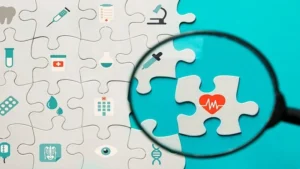Comparing the Best: Procurement vs. Supply Chain vs. Workflow Applications for Your Business
As businesses strive to optimize operations, streamline costs, and enhance efficiency in 2025, understanding the roles of procurement, supply chain management, and workflow applications is crucial. While these functions are interconnected, they serve distinct purposes, and leveraging the right software can drive significant value. This article explores the differences between procurement vs supply chain management and how workflow applications can bridge the gap, helping you choose the best tools for your business.
Understanding Procurement vs. Supply Chain Management
What Is Procurement?
Procurement is the process of sourcing, purchasing, and acquiring the goods, services, and raw materials a business needs to operate. It focuses on tactical activities such as identifying suppliers, negotiating contracts, managing vendor relationships, and ensuring cost efficiency and quality. Procurement is often seen as the starting point of the supply chain, concentrating on inputs—securing the resources required for day-to-day operations or production. For example, a manufacturing company might use procurement to source raw materials like steel or electronics at the best possible price while maintaining quality standards.
Key aspects of procurement include:
- Sourcing and supplier selection
- Contract negotiation and management
- Purchase order processing and invoice handling
- Ensuring compliance with company policies and industry regulations
Procurement is input-focused, aiming to minimize costs and risks while maximizing value from suppliers. However, its scope is narrower, primarily dealing with the acquisition phase rather than the broader flow of goods.
What Is Supply Chain Management?
Supply chain management (SCM) takes a broader, more strategic approach, overseeing the entire lifecycle of a product—from raw materials to finished goods delivery to the end customer. It encompasses procurement but extends far beyond, including logistics, inventory management, production, distribution, and customer satisfaction. SCM focuses on outputs, ensuring that the entire network of suppliers, manufacturers, logistics providers, and retailers works seamlessly to deliver products efficiently and cost-effectively.
For instance, while procurement might secure raw materials for a car manufacturer, supply chain management ensures those materials are transported to the factory, assembled into vehicles, stored in warehouses, and delivered to dealerships on time. SCM aims to reduce friction, optimize operations, and enhance resilience against disruptions like supply shortages or geopolitical challenges.
Key aspects of SCM include:
- Logistics and transportation management
- Inventory control and demand forecasting
- Production scheduling and distribution
- Risk management and supplier coordination across the value chain
In essence, procurement vs. supply chain management highlights a microcosm (procurement) within a larger ecosystem (supply chain). While procurement focuses on acquiring resources, SCM ensures those resources are transformed and delivered effectively.
The Role of Workflow Applications
Workflow applications are software tools designed to automate, streamline, and optimize business processes, including those in procurement and supply chain management. These tools create visual, customizable workflows that reduce manual tasks, improve collaboration, and provide real-time insights. In the context of procurement vs. supply chain, workflow applications serve as a bridge, integrating and automating processes across both functions to enhance efficiency and reduce errors.
For procurement, workflow applications can automate tasks like purchase requisitions, supplier approvals, and invoice processing, ensuring compliance and transparency. In supply chain management, they can manage inventory updates, track shipments, and coordinate logistics, minimizing delays and improving visibility. By standardizing processes, workflow applications help businesses scale operations, reduce costs, and maintain consistency.
Examples of workflow applications include platforms like Cflow, Kissflow, Pipefy, and Procurify, which offer no-code or low-code solutions for creating tailored workflows. These tools integrate with existing systems, such as ERP or financial software, to provide a centralized platform for managing procurement and supply chain activities.
Comparing the Best Applications for Procurement, Supply Chain, and Workflows
1. Procurement-Focused Applications
Procurement software, such as Ivalua, Tradogram, and Kissflow Procurement Cloud, is designed to streamline sourcing, purchasing, and supplier management. These tools often include features like:
- Automated purchase orders and approvals
- Supplier relationship management
- Spend analysis and cost savings tracking
- Contract management and compliance monitoring
For businesses prioritizing procurement vs. supply chain efficiency, these applications focus on tactical improvements, such as reducing maverick spending and negotiating better vendor terms. However, they may lack the broader scope needed for end-to-end supply chain oversight.
2. Supply Chain Management Applications
Supply chain software, like NetSuite, SAP, or BlueBin, focuses on managing the entire product lifecycle, from raw materials to customer delivery. Key features include:
- Inventory and warehouse management
- Demand forecasting and production planning
- Logistics and transportation optimization
- Real-time tracking and risk management
These tools are ideal for businesses needing to optimize outputs and ensure seamless coordination across the supply chain. However, they may not dive as deeply into the granular procurement processes like supplier negotiations or purchase order automation.
3. Workflow Applications for Both
Workflow applications, such as Cflow, Pipefy, and Order.co, offer versatility for both procurement and supply chain management. They enable businesses to create custom workflows that address specific needs, such as:
- Automating procurement processes (e.g., requisition approvals, invoice matching)
- Streamlining supply chain tasks (e.g., shipment tracking, inventory updates)
- Enhancing collaboration between procurement and SCM teams
- Providing analytics for data-driven decision-making
These tools are particularly valuable for integrating procurement vs. supply chain operations, reducing silos, and improving overall efficiency. For example, Cflow’s no-code platform has been used to automate purchase order approvals in healthcare supply chains, significantly reducing delays and errors.
Choosing the Right Tool for Your Business
When comparing procurement vs. supply chain vs. workflow applications, consider the following factors:
- Business Size and Needs: Small to medium businesses (SMBs) may benefit from flexible, low-cost workflow applications like Kissflow or Pipefy, while large enterprises might require robust procurement and SCM solutions like Ivalua or SAP.
- Integration Capabilities: Ensure the software integrates with your existing ERP, financial, or CRM systems to create a unified ecosystem.
- Scalability: Choose tools that can scale with your business, accommodating new suppliers, products, or complex workflows as needed.
- User-Friendliness: Opt for no-code or low-code platforms if your team lacks technical expertise, ensuring ease of adoption and customization.
- Cost vs. Value: Evaluate pricing models (e.g., subscription-based or SaaS) against the potential ROI, such as cost savings, efficiency gains, and risk reduction.
Why Integrate Procurement, Supply Chain, and Workflow Applications?
Integrating these functions through workflow applications can yield significant benefits:
- Cost Reduction: Optimizing procurement and supply chain processes can lower operational costs by up to 20%, according to recent insights.
- Improved Efficiency: Automation minimizes manual tasks, streamlines workflows, and reduces errors, allowing teams to focus on strategic priorities.
- Enhanced Collaboration: Real-time data sharing and communication tools break down silos between procurement and SCM teams, aligning goals and timelines.
- Risk Mitigation: Advanced analytics and AI in workflow applications can predict and address supply chain disruptions, ensuring business continuity.
Conclusion
In 2025, businesses must navigate the complexities of procurement vs. supply chain management to remain competitive. While procurement focuses on acquiring resources efficiently, supply chain management ensures those resources are transformed and delivered effectively to customers. Workflow applications play a pivotal role in bridging these functions, automating processes, and providing the agility needed for modern operations.
By comparing the best procurement, supply chain, and workflow applications—like Ivalua, SAP, and Cflow—you can select tools that align with your business goals. Whether you prioritize tactical procurement improvements, strategic supply chain optimization, or integrated workflow automation, the right software can drive efficiency, reduce costs, and position your business for success. Evaluate your needs, explore integrations, and embrace the power of workflow applications to transform your operations today.
Read More: https://worldblogsmag.com/




